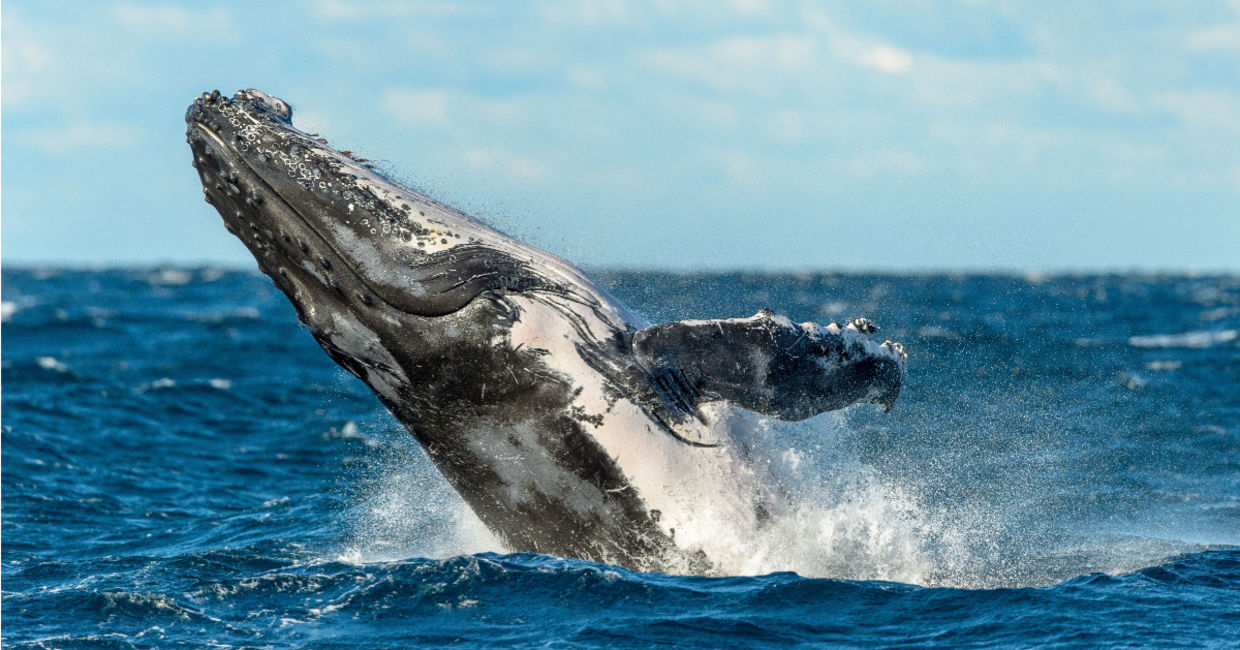
(Trevor Scouten / Shutterstock.com)
Humpback whales are, without a doubt, one of the most majestic creatures in the ocean.These roughly bus-sized mammals are famous for their plaintive, complex whale songs which echo across the oceans, National Geographic reports, their playful, splashy antics make them a favorite for whale watches.
Humpbacks are also a conservation success story. Once hunting to near extinction, humpback whales have made an incredible comeback, with the modern humpback population possibly even exceeding their pre-whaling era numbers in the Pacific.
Whale Boon
A yearly census done by the Organization for the Rescue and Research of Cetaceans (ORRCA) showed that the humpback population off Australia’s coast increased by 57 percent over the course of the last year, reports ABC News.
"We think we have more whales in the population than we did pre-whaling," professor Mike Noad, director of the Centre for Marine Science at the University of Queensland, tells ABC News. He hypothesizes 40,000 whales will pass by the island country, along the so-called “Humpback Highway” this season.
Thanks to the steady increase in the humpback population, last year, Australia removed the marine mammals from their threatened species list, a list they’d been on for decades, thanks to illegal Soviet overfishing in the 1950’s decimated their regional population.
A Quieter Song
Interestingly, the humpback comeback actually resulted in the reduction of the singing that humpbacks are so famous for. Although the sea still reverberates with humpbacks' low grunts and calls, they are quieter than they were during the era of humpback hunting, reported AP News.
Marine biologist Rebecca Dunlop, tells AP that “It was getting more difficult to actually find singers. When there were fewer of them, there was a lot of singing — now that there are lots of them, no need to be singing so much.”
View this post on Instagram
Dunlop surmises that the whale song was part of a humpback courting ritual who’s importance became oversized when finding a mate was harder due to plummeting whale population. “It was hard just to find other whales in the area, because there weren’t many,” he says.
So the reduction of whale song is actually a positive sign for the ocean’s recovery, Boris Worm, a marine biologist at Dalhousie University in Canada explains. According to Worm, “As animal populations recover, they change their behavior — they have different constraints.”
Not Just the Humpbacks
And, the Australian humpbacks aren’t the only cetaceans in population recovery. The News Tribune reports a similar population boom for Bigg’s killer whales in America’s Pacific Northwest.
Like the humpbacks, the orca population also nosedived in the 1950s. In this case, hunting of harbor seals, which these whales depend on for food, was responsible for the decline. In 1972, the government passed the Marine Mammal Protection Act, which allowed the Bigg’s killer whales to thrive yet again.
View this post on Instagram
Erin Glass, of the Pacific Whale Watch Association says in a PWWA press release, “What’s happening with Bigg’s killer whales right now is truly remarkable to witness. People once referred to them as ‘transient’ killer whales because sightings were so rare, but now we’re seeing them almost daily, and we have their food to thank for that.”
The Right whales of the North Atlantic are another population in recovery, according to CBC. This critically endangered cetacean only had around 350 members in 2021.
In addition to overfishing, these whales also suffered ship strikes, but marine speed limits have reduced the frequency of these accidents to near zero. Thanks to these efforts, the decline of Right whales seems to be leveling off and their numbers are beginning to gradually increase.
The sight of these once-endangered whales, Right, orcas, and humpbacks, thriving once more is a testament to the positive impact of conservation measures and underscores the importance of continued efforts to protect and preserve our ocean's diverse marine life. As their populations gradually rebound, it's a beacon of hope for the future health and sustainability of Earth’s oceans.
YOU MIGHT ALSO LIKE:
Whales Have Something to Cheer About!
Majestic Right Whale Spotted Frolicking in the Ocean
Blue Whale Sightings in Antarctica Are Something to Celebrate







